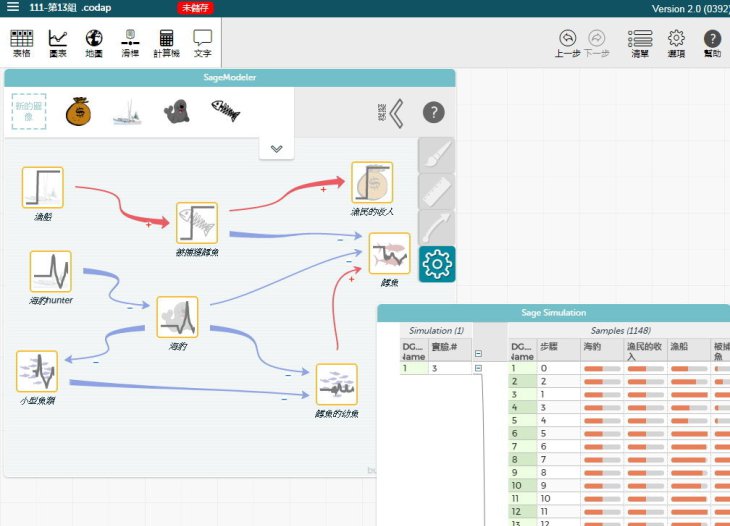
As our senior software engineer Kirk Swenson said in a recent @Concord article, the Concord Consortium is all about impact: getting more students in more places doing STEM inquiry. Since only about 5% of the Earth’s population speaks English as a first language, it makes sense to reach beyond English to make our free resources available to a wider diversity of students.
Thanks to some dedicated professionals around the world, SageModeler, our open-source systems modeling tool, is now translated into four languages in addition to English: Chinese, Spanish, Turkish, and Hebrew. (An Estonian version is in the works.)

A flag icon in the upper right corner of the application toggles between languages.
The SageModeler translations are more accurately called localizations, and are ideal for Subtitle Translations. Whereas translation is the process of simply exchanging the original words for those of the new language, localization modifies the initial language by adapting content based on cultural and regional usage. The subtle distinctions inherent in localization can make a website or application much more understandable and useful.
Except for the Chinese SageModeler, which required hand coding, all of the localizations were accomplished using POEditor, an online translation service. But localizing an application has many challenges, some of them inherent to language structure itself.
Hebrew: Long words and ant trails
Hebrew reads right to left and the language is gender-related, according to Tom Bielik, who translated SageModeler into Hebrew. “Some technical issues occurred when words in Hebrew were too long and did not fit the available space in the website,” he explains. “However, after a few iterations, most issues were worked out and resolved.” Bielik is a research associate for the CREATE for STEM Institute at Michigan State University and an Affiliated Advisor to the Department of Science Teaching at the Weizmann Institute of Science in Israel. In additional to using SageModeler as part of a professional development course for teachers in Israel, Tom and his colleagues developed a unique weeklong middle school science unit to investigate how ants communicate to form an ant trail.
Turkish: The vowels challenge
Ibrahim Delen, Associate Professor of Curriculum and Instruction at Usak University in Turkey, did the Turkish translation of SageModeler with the support of Ercan Akpınar, Professor of Computer Education and Instructional Technology at Dokuz Eylul University in Turkey, and his research team. Delen uses SageModeler in an undergraduate physics lab as well as a methods course. “Modeling is a core practice of the Turkish science curriculum,” he notes. “But there are not available tools specifically designed to support this practice.” His biggest translation challenge was vowels. “We use suffixes compared to separate words in English. The problem is based on vowels. Depending on the word, suffixes can have little changes (-den, -dan, -ye, -ya).”
From X to Y is translated as X’den Y’ye.
From A to O is translated as A’dan O’ya.
In 2018, Delen presented an early analysis of his students’ experiences using the Turkish SageModeler at the 27th International Congress on Educational Science (ICES/UEBK) in Antalya, Turkey. Over the next two years he plans to track the sophomores who took his courses and analyze their progress.
Spanish: Easy going

Cristián Rizzi Iribarren translated SageModeler into Spanish using POEditor.
Spanish, according to Cristián Rizzi Iribarren, can be a bit wordy, but using POEditor, “The process was easy going,” he says. An Affiliated Professor at the University of San Andrés in Argentina, Rizzi Iribarren has also translated the popular High-Adventure Science climate module and other Concord Consortium activities and publications, including a 2017 Science Scope article on systems modeling (“Estudiantes crean modelos de sistemas”).
“SageModeler is a tool that can also be used at elementary school and middle and high school as well. And this flexibility is of enormous value,” says Rizzi Iribarren, who is also a technical advisor to the Ministry of Education of the city of Buenos Aires and works in the “Enlace Ciencias (Science Link)” program training teachers how to teach science using all types of modeling tools, including SageModeler.
Chinese: It’s all about function

The Chinese SageModeler was created by a team at the National Changhua University of Education.
The Chinese version of SageModeler was translated by Silvia Wen-Yu Lee and her team at the National Changhua University of Education in Taiwan, where she is Director of the Graduate Institute of Science Education. POEditor wasn’t available when her team tackled SageModeler, so their translation was hand coded. They ran into technical challenges installing simulators on their PC machines, but they also grappled with an issue similar to all the translators: finding the right words. “We think it is more important to translate based on the ‘function,’ rather than do word-by-word translations,” Lee explains.
Lee used SageModeler with seventh grade students to model the relationship between marine biology and human activity in a unit about environmental conservation. “The students learned how to draw models instantly after a brief demonstration,” Lee explained in a blog post last year. “Our teachers were amazed by the students’ level of engagement and by the students’ attention to the relationships when they are working together on the SageModeler.”
All of the translators are busy teachers, academics, and program directors in their countries. Given the amount of work involved with localizing an application, what was their motivation? Cristián Rizzi Iribarren put it this way: “I never tire of repeating how amazing Concord Consortium is. Every tool, every subject, every lesson has a great potential in enhancing STEM education through integrating digital technologies into the curriculum.”
SageModeler was developed by the Building Models project, a collaboration between the Concord Consortium and the CREATE for STEM Institute at Michigan State University.